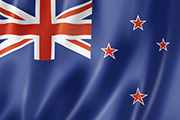Download this Guide as a PDF.
View a Consultation Document Template that can be adapted for a particular country.
1. What Is It and Why Is It Needed?
For novel or complimentary tobacco control policies in particular, allowing all potential stakeholders, including industry, the opportunity to make submissions or comments means the policy is developed having taken all issues and views into account. The advantages of a consultation are that:
- government may receive useful comments from public health organizations and experts;
- tobacco companies may submit comments in a transparent fashion rather than behind closed doors;
- from a legal perspective, consultation gives governments another rebuttal to the typical tobacco industry arguments about poorly crafted policies and thoughtless regulatory processes; and
- media coverage of the consultation can help promote the measures in advance of implementation.
Most countries (but not all) that have adopted plain packaging laws did so after a process that allowed stakeholder input.
The process for stakeholder input should be guided by the normal administrative procedures in each country. One option is to have full public consultation; alternatively, the process may, for instance, form part of parliamentary committee procedures allowing key stakeholders to make written submissions or by way of public hearings, which can be a shorter procedure. In Ireland, the Public Health (Standardised Packaging of Tobacco) Bill was referred to the parliamentary Joint Committee on Health, which ran public hearings for key stakeholders.
It may be unusual for the Health Ministry in some countries to run public consultations in respect of public health measures. Governments do not need to undertake a process for plain packaging that is outside of its normal constitutional requirements. It is also important to bear in mind that a poorly run public consultation, which does not allow effective responses or is a mere sham because the government has already made up its mind, can lead to greater legal problems than not running one at all.
2. Article 5.3 of the WHO FCTC
“When seeking comments or submissions from tobacco companies, governments need to be careful to comply with Article 5.3 of the WHO FCTC which stipulates that Parties shall act to protect tobacco-control policies from commercial and other vested interests of the tobacco industry. Given that plain packaging involves technical regulations that impact on the way in which a product is manufactured, it can be important that those parts of industry that are impacted be allowed to have their input considered. The key to interaction with the industry is to be clear about exactly what issues comments are sought on and to ensure there is complete transparency in respect of any meeting or discussion.
Tobacco companies can provide written submissions, which should then be made publicly available. Meetings can take place but should be limited to where specific information is needed in relation to potential costs to industry or to technical drafting of the legislation which may impact on the manufacturing process in an unnecessary way. Where meetings do take place, full records should be made publicly available about the arrangements, who was present at the meeting and minutes of what was discussed.
3. How Should It Be Run?
- Set clear time frames — these need to be tailored to the specific country’s circumstances. For the purposes of planning a legislative timetable, it is suggested that a consultation run for a minimum of six weeks and that the time to review and consider the responses be at least four weeks, although this is very dependent on how many responses are received.
- Set clear parameters of the policy intentions and the questions that are being asked.
- Ensure that all relevant stakeholders have convenient access to the consultation document and an efficient means of responding.
- Mobilize an alliance of health-orientated stakeholders to respond and to communicate with the media.
- Do not commit to responding to individual submissions.
A consultation document also needs to be meaningful and provide stakeholders with sufficient information to respond. It is recommended that it includes the following:
- the existing tobacco-control measures already in place in the country;
- the current smoking prevalence and consumption rates and the costs and harms to society they cause;
- a proposal that plain packaging of tobacco products be introduced (alongside any other tobacco control measures that are being introduced at the same time);
- the aims and objectives of the policy (as described in Guide 1.1);
- a summary of the evidence base that supports the introduction of plain packaging (Guide 2.1);
- what the features the proposed legislation would include in sufficient detail to allow comment (or a draft of the proposed legislation if that is available);
- the time frame that the government proposes; and
- how to make submissions and the deadline for them.
Example Consultation Documents (Listed by Country) | |
|---|---|
Norway | |
United Kingdom | Public consultation paper [April 2012] |
Singapore | Public consultation paper [March 2016] |
Canada | |
New Zealand | |
Ireland | Report of the Joint Committee on Health following public stakeholder hearings [April 2014] |







